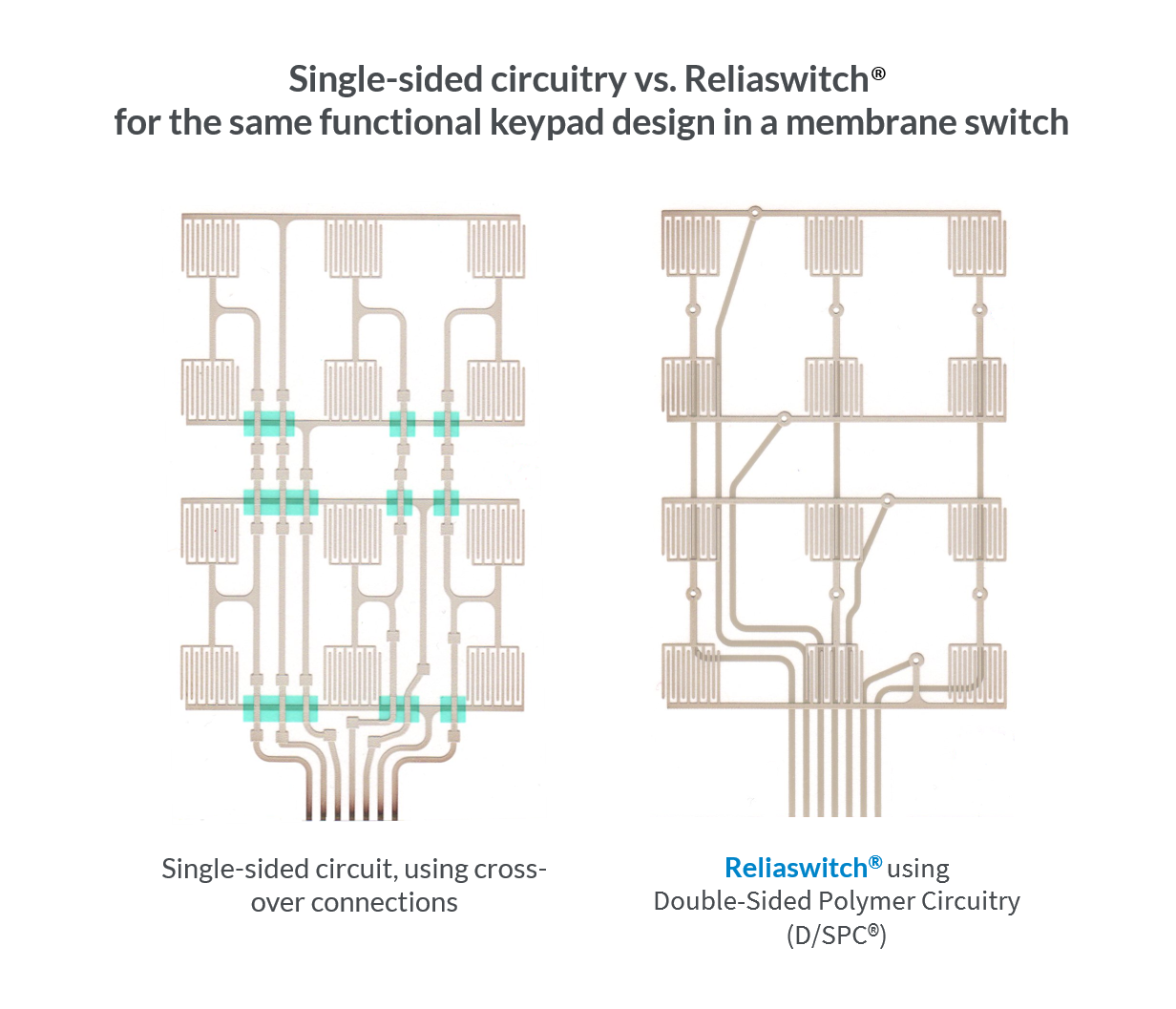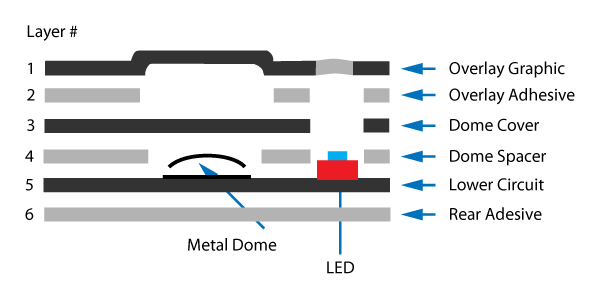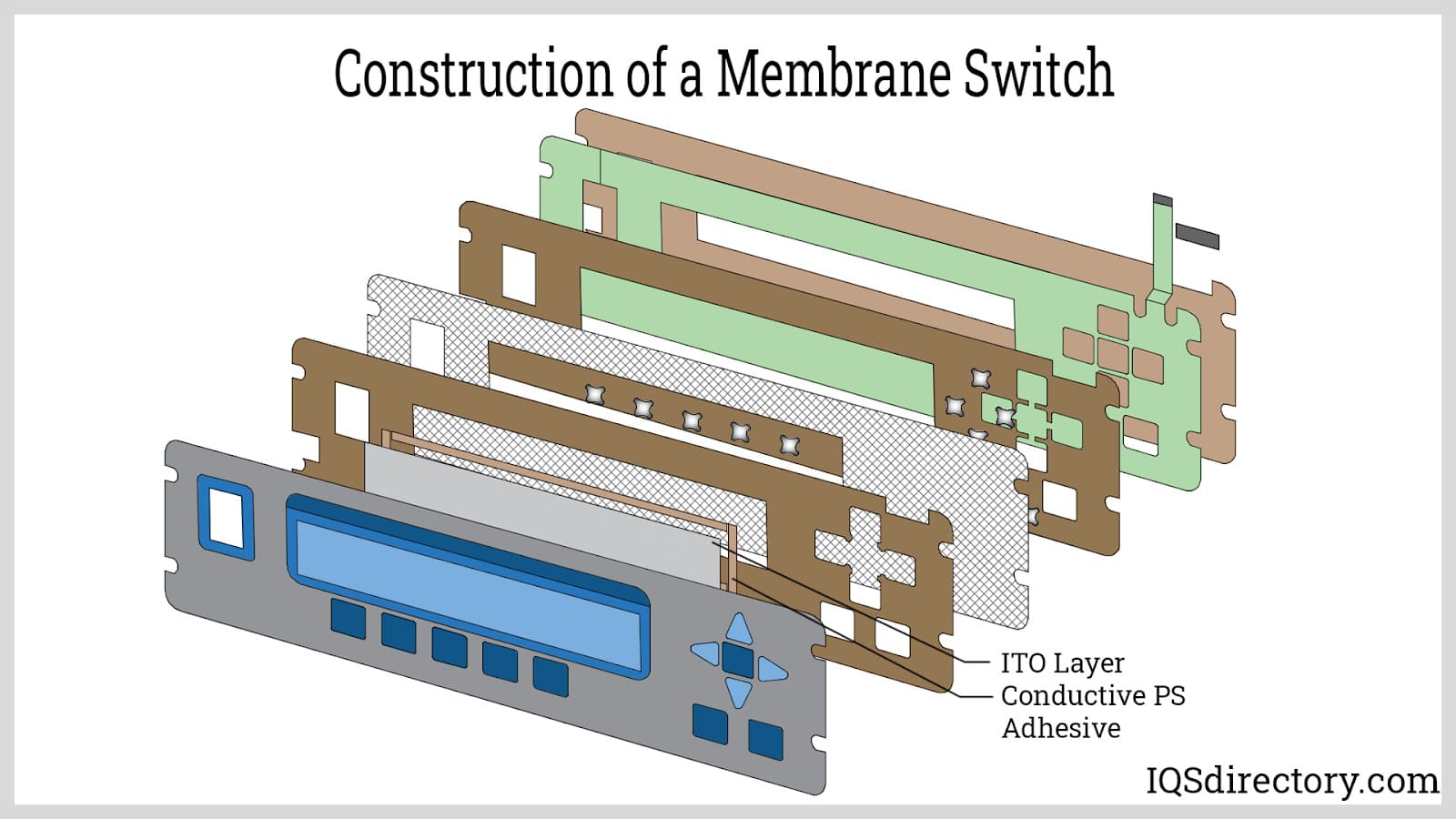The Production Process Behind Membrane Layer Switch Over: What You Required to Know
The manufacturing procedure behind membrane switches over combines mindful layout, material choice, and quality control. It starts with comprehending the intricacies of membrane layer button layout and proceeds with different stages, consisting of material selections and printing strategies. Each stage plays a necessary function in guaranteeing performance and resilience. Nevertheless, the intricacies of layer building and construction and the rigorous screening requirements might reveal understandings that are not quickly apparent. What exists past these foundational aspects?
Recognizing Membrane Switch Design
Although membrane switches may show up straightforward at initial glance, their style entails complex factors to consider that assure functionality and resilience. The style procedure begins with a detailed understanding of customer needs, including the user interface's desired application and ecological factors. Ergonomics is a crucial element, as the design should promote ease of usage while making certain that tactile comments meets customer expectations.Moreover, the layering of components, such as graphic overlays, glue layers, and conductive traces, must be specifically crafted. membrane switch. This split arrangement not just affects the switch's responsiveness however also affects its durability. Attention is provided to the sealing strategies utilized to shield against moisture and dust, which can compromise efficiency. Additionally, layout factors to consider include looks, where color pattern and aesthetic quality boost customer experience. Inevitably, the style of membrane changes balances capability, customer experience, and resilience, ensuring that they satisfy the needs of various applications effectively
Products Used in Membrane Switch Over Production
When picking products for membrane layer switch manufacturing, it is necessary to contemplate both efficiency and toughness. The primary materials include polyester and polycarbonate films, which provide adaptability and strength. These films are typically coated with glue to ensure correct bonding to substratums. Conductive inks, generally composed of silver or carbon, are vital for creating electric connections within the switch, enabling dependable operation.Additionally, a protective layer, such as a difficult coat, is frequently related to improve scrape resistance and durability. The choice of backing product, such as acrylic or foam, can significantly affect the switch's responsive feel and general user experience. Various ecological elements, including temperature level and humidity, must lead material selection to assure peak efficiency in details applications. Ultimately, the appropriate combination of products adds to the membrane layer button's functionality and life-span, making educated choices necessary for suppliers.
The Printing Refine: Creating Graphics and Text
The printing process in membrane layer button manufacturing plays a considerable function in generating premium graphics and text. Numerous visuals design methods are utilized to guarantee visual charm and functionality, while mindful ink option methods are essential for durability and performance. Comprehending these components is essential for accomplishing finest lead to membrane switch style.
Graphic Design Techniques
Graphic design methods play a vital duty in the printing procedure of membrane switches, as they specify exactly how graphics and message will ultimately appear on the final product. Effective graphic style entails the tactical use of fonts, shades, and layouts to improve readability and aesthetic allure. Developers frequently use vector graphics for scalability, making certain that photos stay sharp at different sizes. Furthermore, attention to contrast and positioning is vital, as it influences individual interaction and aesthetic high quality. The unification of branding aspects, such as logos, need to be managed with like maintain brand name integrity. On the whole, thoughtful visuals layout methods add considerably to the capability and beauty of membrane layer switches, impacting user experience and product performance.
Ink Choice Approaches
Selecting the suitable ink is crucial for accomplishing the desired aesthetic high quality and durability in membrane layer button production. Various ink types are used, including solvent-based, water-based, and UV-curable inks. Each kind supplies distinct features, such as resistance, bond, and versatility to ecological factors. Solvent-based inks are often preferred for their toughness and dynamic colors, while water-based inks are a lot more ecologically pleasant however might have constraints in bond. UV-curable inks provide quick healing and durable performance. Furthermore, shade matching strategies guarantee that the picked inks align with design requirements. Eventually, the option of ink have to consider elements such as application method, substratum compatibility, and end-use needs to accomplish premium lead to membrane switch graphics and message.
Layer Construction and Setting Up

Material Option Process
A cautious choice of products is necessary in the production process of membrane switches, as it directly influences functionality and durability. The key materials used consist of polyester, polycarbonate, and various conductive inks. Polyester is usually favored for its superb resistance to chemicals and abrasion, making it ideal for rough settings. Polycarbonate, on the various other hand, offers remarkable quality and impact resistance, which is valuable for applications needing presence and effectiveness. Conductive inks, commonly made up of silver or carbon, are important for creating trusted electric pathways. Furthermore, the choice of adhesive products influences the overall honesty of the button - membrane switch. Reviewing elements such as ecological exposure, tactile comments, and aesthetic demands guides makers in picking the very best products for their particular applications
Layer Attachment Strategies
Adhering layers in membrane switch building and construction is a vital process that ensures performance and longevity. Different attachment methods are employed to safeguard suitable bonding between layers, which usually include making use of adhesives, heat, and stress. Pressure-sensitive adhesives (PSAs) are commonly utilized for their convenience of application and prompt bonding capacities. In addition, thermal bonding strategies can be used, where heat is utilized to activate glue buildings, securing a solid bond. The option of bond method greatly relies on the products involved and the specific application needs of the membrane button. Correct placement and consistent application of adhesives are necessary to protect against defects, protecting the switch operates efficiently throughout its intended life expectancy.
High Quality Control Measures
Assuring quality control during the layer construction and setting up of membrane switches is essential for maintaining efficiency and integrity. This procedure typically entails a number of essential procedures, including thorough examinations at each phase of manufacturing. Producers make use of sophisticated testing methods, such as peel tests and attachment analyses, to confirm the integrity of layer bonds. In addition, visual inspections are performed to identify any kind of defects in printing or material inconsistencies. Environmental problems, such as temperature and humidity, are thoroughly checked to guarantee perfect curing and attachment. Furthermore, normal calibration of equipment aids preserve precise production standards. By applying these high quality control procedures, makers can considerably lower the threat of product failing, ensuring that the final membrane layer switches over satisfy the needed requirements and customer expectations.
Examining and Top Quality Control Actions

Innovations in Membrane Layer Switch Modern Technology
As advancements in technology remain to progress, membrane layer buttons are gaining from cutting-edge growths that improve their functionality and individual experience. One remarkable development is the assimilation of capacitive touch technology, which enables more receptive and intuitive interface. This shift not only improves aesthetics but also reduces mechanical wear and tear, expanding the lifespan of the switches.Additionally, improvements in graphic overlay materials have caused boosted durability and resistance to ecological factors such as moisture and UV light. These products now supply boosted clarity and brightness, more raising the visual appeal.Furthermore, the incorporation of clever technology is changing membrane layer switches right into interactive control panels, making it possible for connection with IoT devices. This connection cultivates a smooth individual experience, leading the way for applications in various markets, from healthcare to consumer electronic devices. Jointly, these innovations setting membrane layer switches over as vital parts in modern tool style.
Often Asked Inquiries
The length of time Does the Membrane Change Production Refine Take?
The duration of the membrane layer switch manufacturing process can differ considerably. Variables such as complexity, materials made use of, and manufacturing quantity impact timelines, with typical manufacturing varying from a couple of days to a number of weeks for completion.
What Are the Usual Applications for Membrane Switches?
Membrane layer buttons are commonly used in various sectors, including automotive controls, home home appliances, clinical devices, and consumer electronics (membrane switch). Their convenience and sturdiness make them excellent for applications calling for user-friendly interfaces and trustworthy efficiency in diverse settings
Can Membrane Layer Changes Be Personalized for Details Requirements?

What Is the Life expectancy of a Normal Membrane Switch?
The lifespan of a common membrane switch differs, yet usually, it ranges from 1 to 5 million cycles. Factors such as use, setting, and worldly quality significantly influence longevity and overall performance with time.

Are Membrane Changes Eco-friendly?
The environmental friendliness of membrane switches differs. Some products used may not be recyclable, while others can be environment-friendly. The general influence depends on making products and practices, demanding cautious consideration during selection and disposal. The manufacturing procedure behind membrane layer switches combines mindful layout, product choice, and top quality control. It begins with understanding the details of membrane button style and advances through various phases, consisting of product click to read choices and printing techniques. When picking materials for membrane button manufacturing, it is essential to ponder both efficiency and resilience. A careful option of materials is important in the production procedure of membrane layer switches, as it straight influences performance and resilience. The selection of adhesion approach mostly depends on the products included and the particular application requirements of the membrane switch.